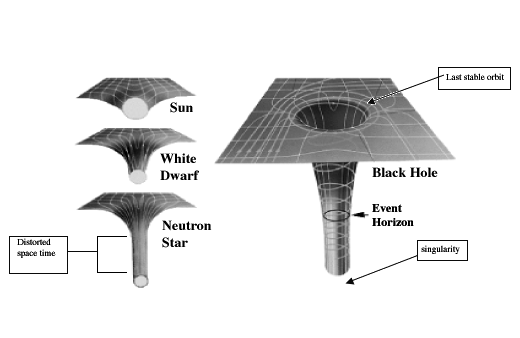Making the Silent Heard and the Obscure Tangible: Black Hole Coalescence
In this vast Universe we cannot begin to comprehend the amount of entities within it or the amount of which we do not understand. One of the most extraordinary objects that physicists have only a shallow grasp of is the black hole. To put this into perspective, imagine an entity that is so dense, it bends the curvature of space and time so that light cannot escape its pull. Even Einstein himself could not believe this elegant Universe could contain something so strange, though his own Theory of Relativity suggested it. Yet, not only have their existences been implied, they have also been observed.
Since Einstein’s time, we have accepted black holes and physicists are now attempting to make sense of these oddities. As of now, we understand that there is a point within the hole called the singularity, where all the mass of the black hole is located. What could this singularity be made of? How large is this point? If an object, including light, finds itself too close to the hole and passes the event horizon it is all over. The mission cannot be aborted. Though I will not cover all the BH theories within this post, that would certainly take a while, I would recommend the eager student to read “Black Holes & Time Warps: Einstein’s Outrageous Legacy” by Kip Thorne, a book suggested to me by an astrophysicist during my time at NASA Goddard Space Flight Center.
Let’s take a step back and analyze this entity from the surface. It is possible for black holes to coalesce and form a new, larger, hole. This can also happen when galaxies merge. As a student, I am amazed to read the many papers already published on these events. Every single branch of physics is needed to understand the mechanics of black hole coalescence and galaxy mergers. When we think of such violent and messy events, it can be difficult to believe that no sound can be detected within the vacuum of space. However, I recently found out that the gravitational waves that are produced by the black hole could be detected and if one had a detector close enough, could be heard.
When the two black holes merge, the system loses angular momentum to gravitational radiation and the coalescing process begins. First, an adiabatic inspiral, which includes a prolonged gravitational radiation timescale compared to the orbital period of the system. This radiation reaction force is cause by electromagnetic radiation on accelerating charged particles. Eventually, the orbit becomes relativistically dynamically unstable and the waves are emitted. During the second phase, the orbit transitions from being radiation reaction driven to violent free falling. This is called the merger phase, releasing gravitational waves that may reveal the unknowns of the dynamics of relativistic gravity in high dynamic environments (Flanagan & Hughes, 1997). This final inspiral is the most luminous gravitational waves in the Universe.
Sound travels as waves through a medium, like air and water. When it reaches the ear, the drum vibrates. Powerful gravitational waves and produce the same effect, in that these waves rippled through space-time, stretching and compressing the curvature. TED talks are probably one of the best sources new and inspirational ideas and I recently watched one by Professor Janna Levin from Barnard College. Her lab was able to produce a model of the “Soundtrack of the Universe”. I highly recommend watching it. It is wonderfully informative. Indeed, we can learn a lot about the Theory of Relativity and the formation of black holes by analyzing the waves emitted by coalescing holes.

All the current work on black holes have made a science fiction like object become more tangible and less obscure. As an astrophysics major, that is an inspiring thing.
Reference:
Flanagan, É. É. and Hughes, S. A., 1997, Measuring gravitational waves from binary black hole coalescences: I. The waves’ information and its extraction, with and without templates.

Is considered extremely hard to discover proficient folks concerning this issue, but you could be seen as have you learnt just what exactly you’re working with! Thanks a lot